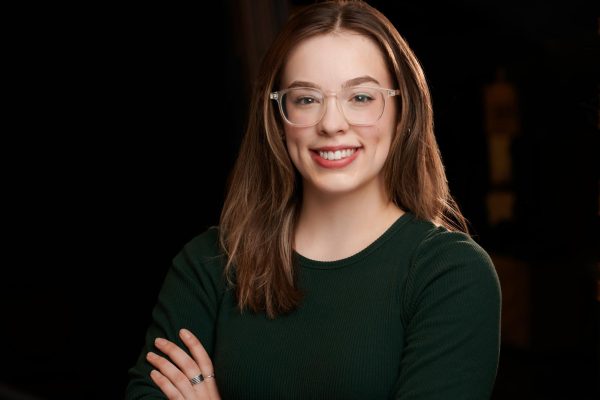Everyone should read books — whether it is paperbacks, hardbacks or audiobooks. Reading can reduce stress, improve our vocabulary and much more. As a kid, I read fantasy and science fiction primarily, but in high school, I took a break from reading altogether. I picked it back up again in college and during my sophomore year, I branched out to nonfiction books and fell in love.
I used to have a harsh distaste for nonfiction books. I thought nonfiction meant biographies about boring old white guys or books about the economy and political theories. If you like those books, I won’t judge. We all have our own interests, but they are not for me. I never even glanced at the nonfiction sections in bookstores, but I was oblivious to the wide array of creative and literary nonfiction right in front of me.
Creative nonfiction is a subgenre that encompasses truth-based storytelling from people’s lives, certain events or important places. With these books, I learn new things about the world around me while staying entertained and engaged, like I am with fiction. I appreciate nonfiction books so much more now, and I think others should give them a chance.
I remember one of the first nonfiction books that really caught my attention. It wasn’t creative nonfiction. It was actually a book about Emperor Justinian of the Byzantine Empire called “Justinian’s Flea: Plague, Empire, and the Birth of Europe” by William Rosen. I read this book because the medieval and Renaissance eras are my absolute favorite periods of history.
I know you have some part of world history you fawn over, too, whether it’s the Roman Empire, Marie Antoinette, The Aztecs, Vikings from Norway or Attila the Hun. It doesn’t have to be super old, it can even be something from the 20th century, like Al Capone or The Red Scare. I encourage you to find that niche and read something about it!
If history bores you, memoir is also a great introduction to nonfiction. In the fall I read “Whip Smart: The True Story of a Secret Life” by Melissa Febos for a creative writing class. It is one of the most fascinating and intriguing pieces I have read lately. Febos recounts her experience as a professional dominatrix in New York City. To me, her writing read like fiction. She intertwines personal accounts and visceral scenes that kept me engaged the whole time.
Last week, I finished a book recommended to me by my professor in my nonfiction senior seminar called “World of Wonders: In Praise of Fireflies, Whale Sharks, and Other Astonishments.” Aimee Nezhukumatathil authors a collection of short stories and anecdotes about the natural world intertwined with stories from her childhood, adulthood and family. It is a beautiful discovery of the human experience parallel to the characteristics of animals or plants and how they survive in the world.
“Women of Will: The Remarkable Evolution of Shakespeare’s Female Characters” by Tina Packer was also a recent read. I love Shakespeare, and this book is another great example of reading about a specific niche. Packer addresses the characteristics and themes of Shakespearean female characters, many of which I was already familiar with. But Packer connects these characters in the order that Shakespeare wrote them. She hypothesizes that the journeys of the female characters from his first plays are strikingly different compared to those in his later ones.
Some of my other favorites include Tom Felton’s “Beyond the Wand: The Magic and Mayhem of Growing Up a Wizard”, Claudia Durst Johnson’s “Social and Psychological Disorder in the Works of Edgar Allan Poe” and “Girl, Interrupted: A Memoir” by Susanna Kaysen.
On my to-be-read list I have books like, “Into the Wild” by Jon Krakauer, “Women Who Run With the Wolves: Myths and Stories of the Wild Woman Archetype” by Clarissa Pinkola Estés and “Getting Medieval: Sexualities and Communities, Pre- and Postmodern” by Carolyn Dinshaw.
The contents of nonfiction span a wider landscape than we typically think. There are ways to ease into the historical based books without being pummeled by confusing theories and dense facts, but if this is too daunting, try something more creative. Go to your local bookstore and find some new nonfiction. Nonfiction can both inform and entertain you in ways you never thought before.
Abby Dobry writes mostly about life and the arts. Write to her at [email protected]



